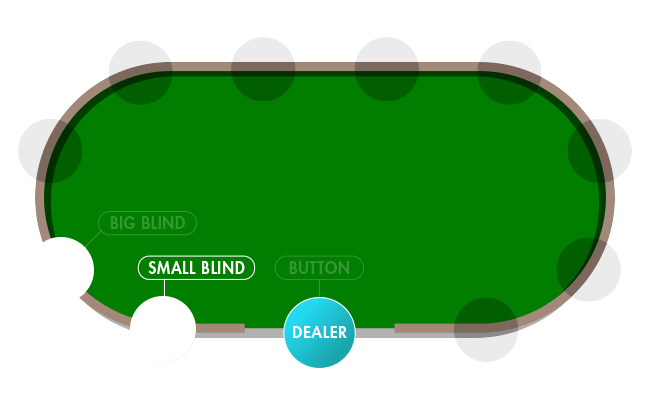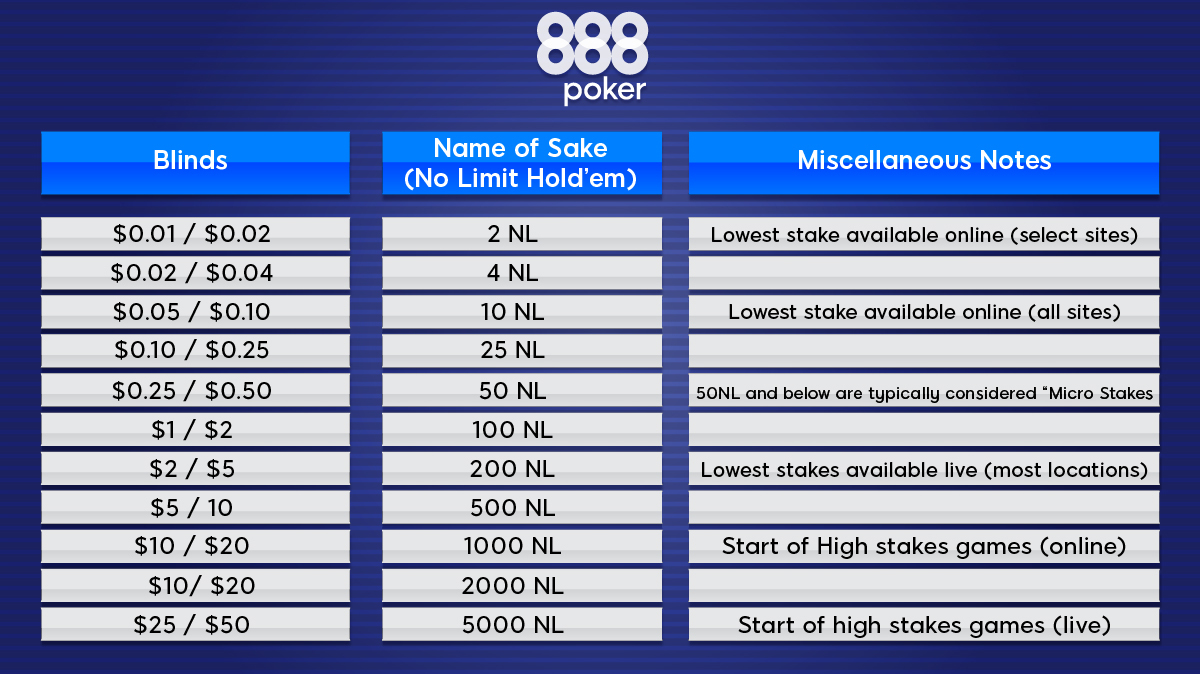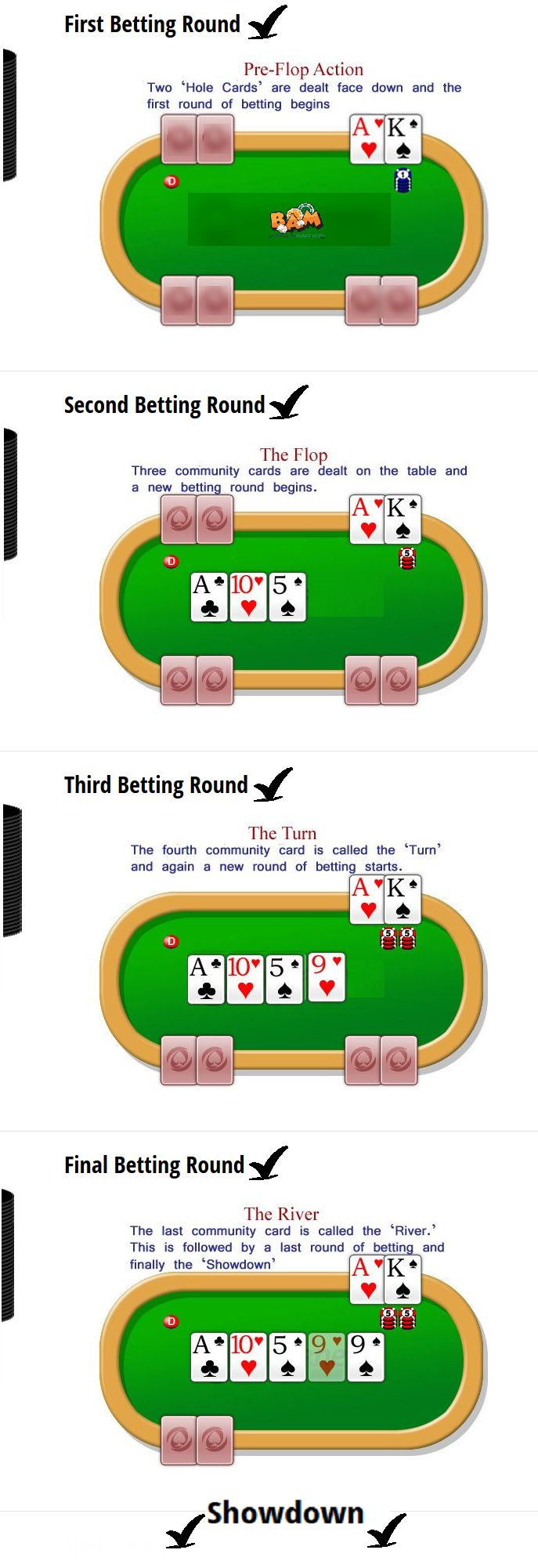The two players to the left of the button (dealer) in a game of hold'em are required to place compulsory bets before the cards are dealt. These are known as blind bets because they are placed 'blind', before the players have even seen their cards.
It’s a weekend and you and a friend or family member are wondering if you can play a game of poker with just the 2 of you. I have been playing for over 10 years and can give you a definitive answer.
In order to start betting in Hold’em, forced bets (known as blinds) are made by the two players immediately clockwise from the dealer button. The person immediately clockwise from the dealer has the small blind, and the next player clockwise has the big blind. Making blind bets is known as posting and this is done before any cards are dealt. Betting Rules Many of the world's most popular poker variants use a system involving a button, small blind, and big blind. The blinds function as obligatory bets that rotate around the table, shifting one player clockwise after each hand. The button travels around the table in this same manner, always one position to the right of the small blind. This is because the rules for heads to head or one on one play in Texas Hold’em can be a bit confusing. According to heads up poker rules, the dealer posts the small blind and the other player posts the big blind. The first card is dealt to the player in the Big Blind. Poker Card Rules & Blinds in Poker (self.ranveerjaffrey) submitted 9 minutes ago by ranveerjaffrey Ask a poker player why they were hesitant at first, and the answer they are likely to give is that the rules of poker kept them away.
Can you play poker with 2 players? Poker can be played with only two players. It is called heads-up. Here are the two player rules:
- The dealer is the small blind and the other player posts the big blind. Players take turns being the dealer.
- The first card is dealt
to the player in the big blind. - The Dealer goes first before the flop and the Big Blind goes first after the flop.
Let’s cover a few more common questions that players typically have about 2 player poker in greater detail.
What Are the 2 Player Poker Rules?
Now that you are set up to play, let’s cover how to play 2 player poker. Here are the basic rules that you will need to know in order to play your game.
You may want to keep this page open in your browser in case questions come up during play.
1. How do the blinds work in 2 player poker?
How the blinds work is probably the most confusing thing in heads-up poker. However, once you get the hang of it it’s not that difficult to remember since there are only a couple of differences between 6-max or full-ring rules.
Who Is the Big Blind Who Is the Small Blind in Heads-Up Poker?
This is the most common question I get about 2 player poker
How Do We Determine Who Gets the Button First at the Start of the Game?
The easiest and most fair way to determine who gets to be dealer first is for each player to draw a card from the deck. The high card gets to deal first.
2. How Are the Cards Dealt in 2 Player Poker?

Which Blind Gets Dealt to First Before the Flop?
The big blind gets the first card and the dealer gets the second card in heads-up play. The easy way to remember this is that the dealer never deals to his or her self first.
Can the Same Person Deal Every Hand?
It’s true that sometimes one person is better at dealing. In this case, it’s okay for the same person to
Just make sure that you move the dealer button each hand. It would be highly unfair if the same person had to play the big blind every single hand!
3. Who Goes First When Only Two Players Are Playing?
I remember walking up to observe the heads-up match between two friends in pub poker. I quickly realized that they were following the opposite order of play that they were supposed to.
I did not want to embarrass them so I kept quiet. It was apparent everyone else didn’t want to as well since none of the 10-15 observers said anything!
Who Goes First Before the Flop?
Pre-flop, the dealer always acts first in 2 player poker.
This rule is exactly the same as pre-flop however, it is easy to get wrong for inexperienced players. The easy way to remember it is that the big blind player acts last before the flop in 6 or 9-handed games, and it makes
Who Goes First After the Flop in Heads-Up?
This rule is also exactly the same for normal poker games. The dealer gets to always go last on the flop.
The biggest perk of playing on the dealer button is that you get to act last and have more information than your opponents. This is especially powerful in heads-up since the big blind can never act last.
What If the Dealer Open Folds in 2 Player Games?
Poker Blind Rules
When the Dealer decides to not play his or her hand before the flop, the small blind is relinquished to the player in the big blind. The dealer button then moves and the next hand begins.
Is it better to play Heads-Up, Cash Games or Tournaments?
Deciding what format to play in 2 player poker all comes down to personal preference. Each type of game has its perks.
Why Play Heads-up Cash Games?
There are a couple of reasons people might choose cash games over tournaments:
- Blinds Do Not Rise – Perhaps the biggest benefit of 2 person cash games is that you don’t have to worry about the blinds going up like they do in tournaments. You don’t need a special tournament clock, you can just choose your stake level and play indefinitely without having to adjust your style to the rising blinds.
- You Don’t Need Poker Chips – In tournaments, you really need to use poker chips that you can “color up” as the game goes on. That means to add higher value chips to compensate for the bigger stakes. Instead, you can use real coins or even paper money to play cash games.
- Cash Games Take More Skill – If you really want to practice and improve at poker, then the best way is through cash games. Once the blinds rise in tournaments, the game becomes more and more about who is the luckiest person.
Why Play Heads-up Tournaments?
Even though I am a cash game specialist, when I play heads-up I actually prefer tournaments. Here is why:
- There Are Logical End Points – While cash games drag on and on, a tournament always ends up with one person having all the chips. You can then decide whether to start anew or call it a night. So, if you want to play best of 3 or best of 5, you have a better idea of when the night will end and can plan for it. For this reason, it’s also a great format for hosting a home poker tournament with multiple players.
- Tournaments Tend to Be Much More Exciting – There’s nothing more fun in poker than getting to the shove-fold phase of a tournament or sit and go. Chips change hands rapidly and anyone can win at that point. Who doesn’t love a race for all the chips?
- The Games Are Usually More Fun for Beginners – Many people that get into poker are used to watching the World Poker Tour or the World Series of Poker. Therefore, tournaments are what they are familiar with and likely to understand better.
If you don’t have poker chips, there are likely plenty of poker chip substitutes lying around the house or office.


A Fun Alternative Format: Play Short-Stacked Cash Games
Another idea is to mix both a tournament and cash game feel by playing short stacked cash games
Poker Texas Holdem Blind Rules

The way it works is that each player starts with 20, 30, or 40 big blinds and then play cash games. The blinds do not rise, but there is still plenty of heavy pre-flop action with lots of reraise shoving
Post-flop also plays a lot easier as a short stack. Top pair is an easy hand to get all-in with when short whereas it can be difficult to play when deed-stacked.
What Is the Best 2 Player Poker Strategy?
The biggest adjustment when playing heads-up poker is that marginal hands go way up in value. 3rd pair or even high card Ace can often win at showdown.
So, loosen up and don’t let your opponent run you over if he or she bets a lot! Conversely, you should bet often when you have any piece of the board or a credible bluff. There is a good chance your opponent might fold a better hand or pay you off with a worse hand.
What 2 Player Games Can We Play Besides Texas Hold’Em?
If you are tired of heads-up No-Limit Hold’em and want to mix in another game occasionally, there are several good options:
- Pot Limit Omaha: In PLO, the heads-up rules are exactly the same as Hold’em except that both players get four hold cards. You also have to use both cards at showdown. Having one Diamond in your hand does not make a flush on a four Diamond board in PLO.
- 5-Card Draw: This is the traditional “old-fashioned” game that most people used to learn poker before No-Limit Hold-em became the dominant game. Both players have a designated ante that they pay before the cards are dealt. Then, you simply deal out 5 cards to each heads-up player. Instead of having a flop, turn, and
river there is instead two betting rounds. Once when you get your initial cards and then after adiscard round. You may discard up to 3 cards (4 if you have an Ace) and get those cards replaced by the dealer. There is then another betting round and then the cards are shown and a dealer determined. You can, of course, fold any time during the hand and only lose the money you have invested up to that point. - 7-Card Stud: This game is similar to draw except that you start with two cards down and one card up. There is then a betting round.
Afterward , another card is turned up one by one with a betting round happening in between. Once both heads-up players each have 7 cards, the dealing is complete and showdown can be reached.
Accessories to Make Matches Even Better
If you want to make your games more classy, then I recommend picking up quality accessories. I wrote recommendation articles for each category, just click the links to learn more:
- Playing Cards– My personal favorite is Copag, what’s yours?
- Poker Chips– I prefer a higher-end set, but there are plenty of good budget poker chip sets available as well.
- Poker Table– I like roll up poker table mats for ease of storage, but that’s just me.
Final Thoughts
Playing heads-up only happens in tournaments if you are the last two players left in the field. However, 2 player poker is something you can do for fun either as a cash game or tournament at home.
If you want to read more about heads-up poker, I wrote a detailed article on the heads-up poker rules for Texas Hold’em. Thanks for stopping by!
Related Questions
Do you have to use both cards in Hold’em? In order to make your best 5-card hand in Hold’em, you can either use both cards or just one.
Is Ace high or low in poker? In Poker, an Ace can usually either be the highest card or the lowest. It can make the highest straight of TJQKA and the lowest straight, often called the wheel, of A2345.
Do you have to match the big blind is poker? In order to qualify to see the flop, you must at least match the amount of the blind.
Mark | Poker Articles, Poker Rules
This article is a part of the Poker Rules series.
Step 3: The Texas Hold’em No Limit Gameplay:
In my previous post in this series I described the different Texas Hold’em hands and how they rank against each other. We are now ready to move on to the actual Texas Hold’em game and how it’s played. In Texas Hold’em two players – the Big Blind and the Small Blind – are required to place bets (known as blinds) in the pot (the amount of money to be won in any single completed hand) before any cards are dealt. This means that in Texas Hold’em there will always be money to win in a hand. The dealer button rotates clockwise after each completed hand, and is used to represent the player holding the dealer position. The position of the dealer button also determines the position of the Big and Small Blind as the Small Blind is the player to the immediate left of the dealer and the Big Blind is the player to the left of the Small Blind (see the figure below). In online poker you don’t have to worry about the position of the dealer and Big and Small Blinds since this is all taken care of automatically by the poker software.
A Texas Hold’em hand begins with the dealer dealing one card face down in a clockwise manner to all the players at the table starting with the player to the immediate left of the Big Blind. Then the dealer deals one more card to each player in the same way.
When all players have two face down cards (known as hole or pocket cards) the first betting round (also known as the preflop betting round) begins, starting with the player to the immediate left of the Big Blind and continuing clockwise around the table. In No Limit Hold’Em the smallest possible bet is the same size as the Big Blind; there is no upper limit to bets. When it’s your turn to bet and you are not the Big Blind you have 3 options: Call, Raise or Fold.
- By calling you bet the same amount as the biggest bet made by the players acting before you.
- By raising you call the biggest bet made by the players acting before you and then place an additional bet over the top.
- By folding you choose not to continue playing your pocket cards, and you will be out of the game until the next hand starts.
When you are the Big Blind in the first betting round and nobody has made a bet larger than you big blind you can choose to Check, Raise or Fold. By checking you simply pass on the turn to the next player without making any bet. This is possible since you have already paid the Big Blind into the pot.
When the big blind has completed his/hers turn, the first three community cards – known as the flop- are dealt face up in the middle of the table. The second betting round then starts with the first player to the left of the dealer who is still playing the hand and continues clockwise. The second betting round ends with the dealer.
The next and 4th community card – known as the turn or the 4th street – is dealt face up and a third betting round follows in the same manner as the second betting round.
Finally the 5th and last community card – known as the river or the 5th street – is dealt face up and a fourth betting round follows in the same manner as the second and third betting rounds. If a player bets during the fourth betting round and all the other players remaining fold then he or she wins the pot without having to show his/hers pocket cards. If one or more players call then a showdown, where all remaining players reveal their pocket cards, determines the winner of the pot according to the hand ranking scheme I described earlier. So there you have it, the Texas Hold’em No Limit gameplay in all its simplicity. There are a couple of extra subtle details regarding special circumstances that may occur during the game, but I will go more into detail with these later.
My next post in this series will deal with choosing which starting hands to play depending on which position you are in relative to the dealer button.
This post belong to the following series:
You could be posting your articles on the Poker Bankroll Blog. Read all about it here.
Similar Posts:
Leave a comment
Special promotions
Poker Blind Rules
Poker Pro Bankroll Series
Latest Poker Strategy Articles
Contact PokerBankrollBlog
